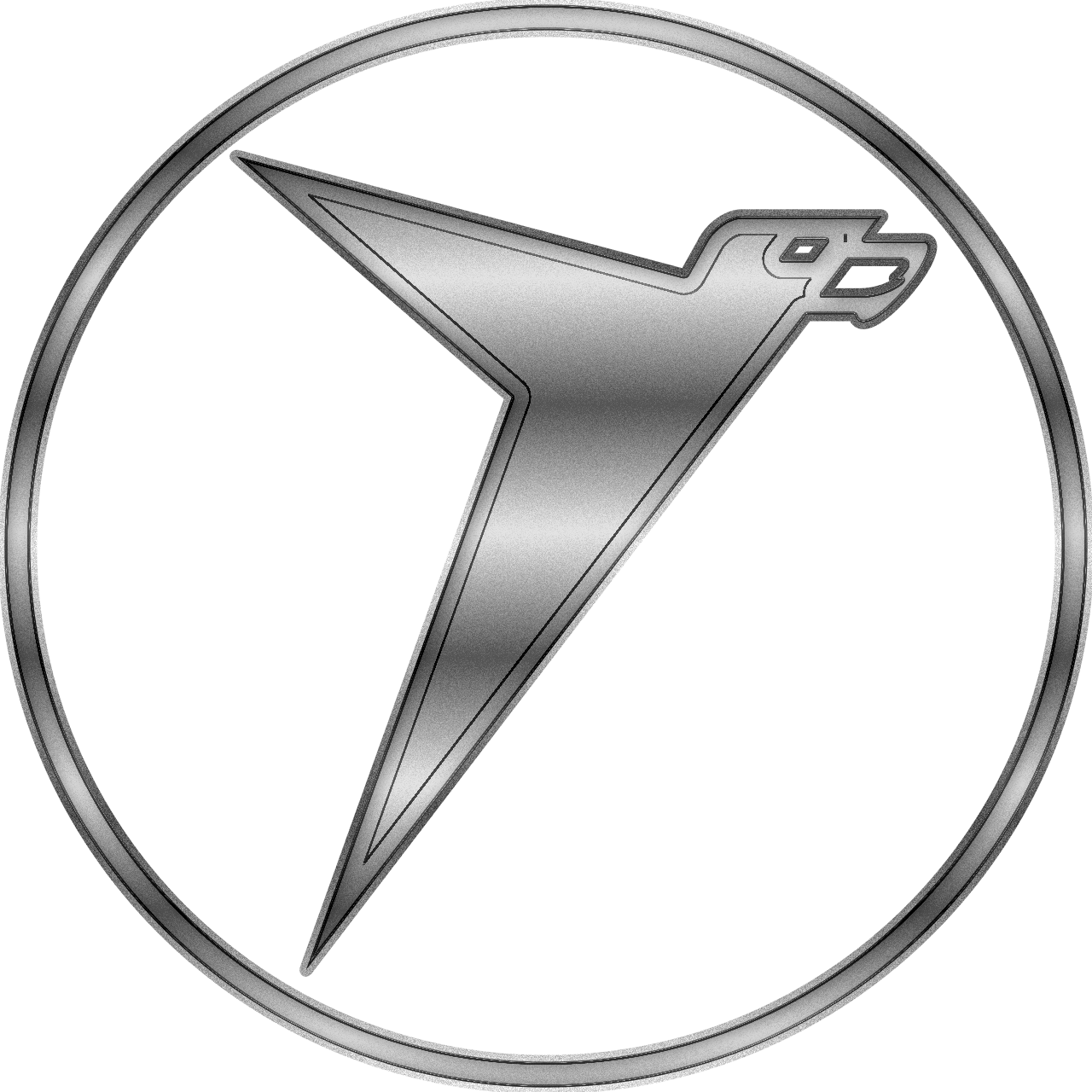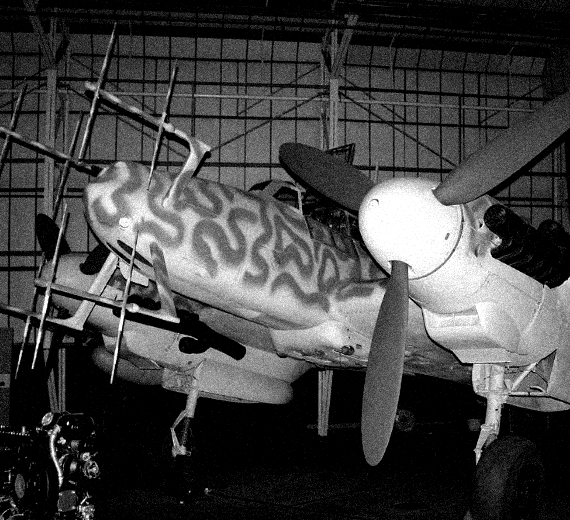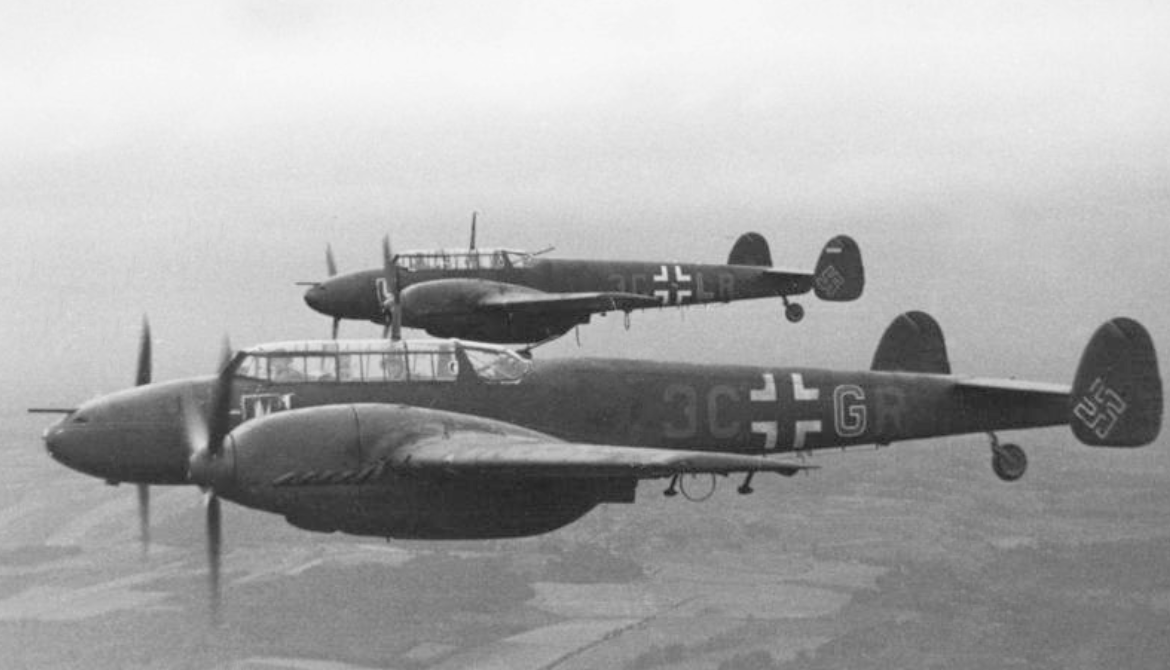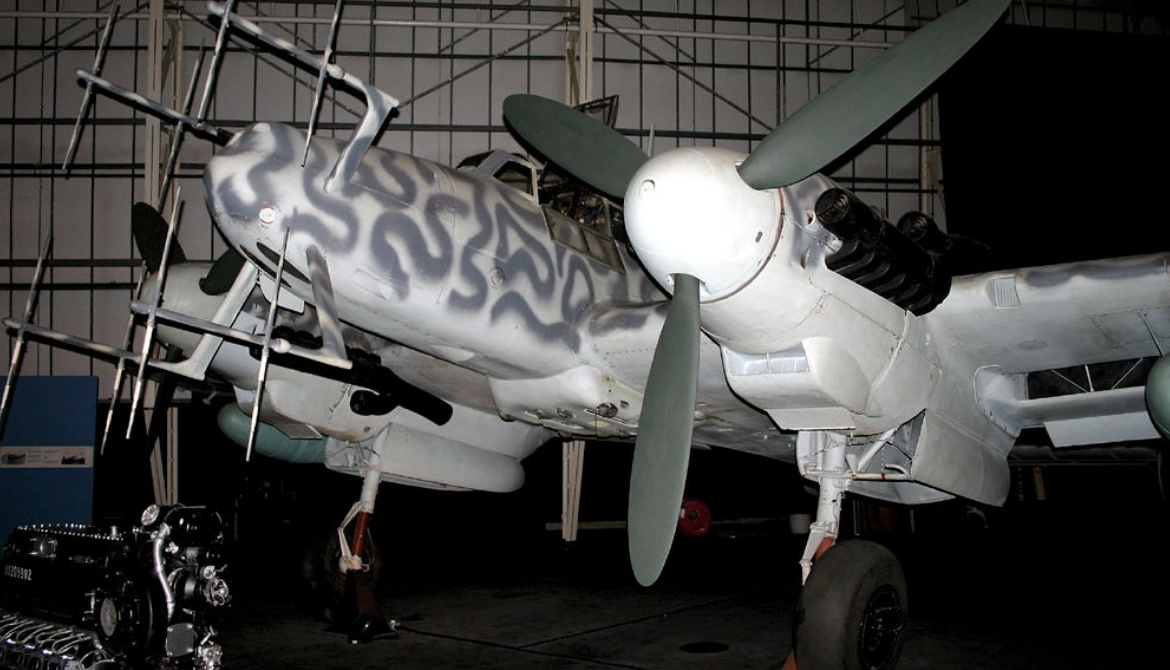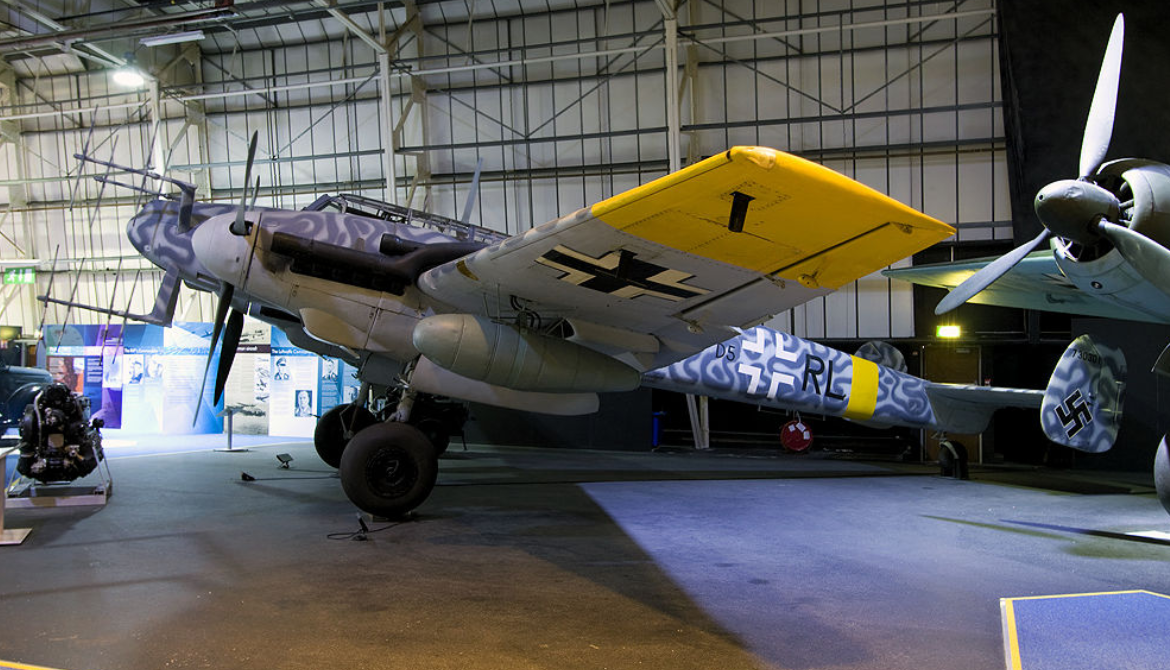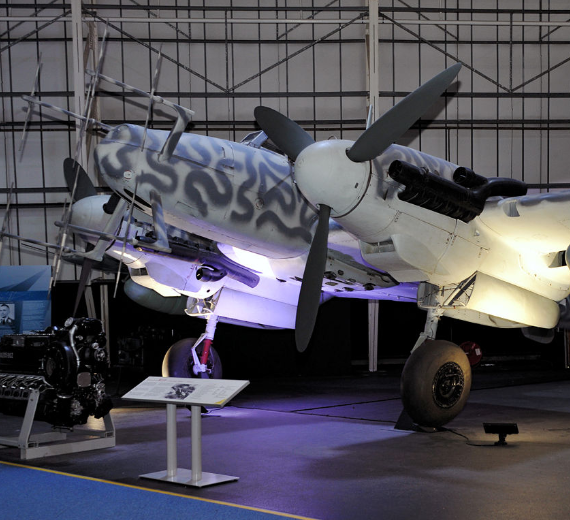Messerschmitt
Bf 110 Zerstörer
 |
|
| General information | |
|---|---|
| Type | |
| Manufacturer | |
| Primary users | Luftwaffe |
| Number built | 6,170[1] |
| History | |
| Introduction date | 1937 |
| First flight | 12 May 1936 |
| Retired | 1945 (Luftwaffe) |
| Variants | |
| Developed into | Messerschmitt Me 210 |
.
History Bayerische Flugzeugwerke (BFW)
Messerschmitt AG
Messerschmitt Bf 110 Zerstörer
Number built 6,170 Introduction date 1937 First flight 12 May 1936

The Messerschmitt Bf 110, often known unofficially as the Me 110,[Note 1] is a twin-engined Zerstörer (destroyer, heavy fighter), fighter-bomber (Jagdbomber or Jabo), and night fighter (Nachtjäger) developed in Nazi Germany in the 1930s and used by the Luftwaffe during World War II. Hermann Göring was a proponent of the Bf 110, believing its heavy armament, speed, and range would make the Bf 110 the Luftwaffe’s premier offensive fighter
The Bf 110 served with considerable success in the early campaigns in Poland, Norway, and France. The primary weakness of the Bf 110 was its lack of maneuverability, although this could be mitigated with better tactics. This weakness was exploited by the RAF when Bf 110s were flown as close escort to German bombers during the Battle of Britain. When British bombers began targeting German territory with nightly raids, some Bf 110-equipped units were converted to night fighters, a role to which the aircraft was well suited. After the Battle of Britain, the Bf 110 enjoyed a successful period as an air superiority fighter and strike aircraft in other theatres and defended Germany from strategic air attack by day against the USAAF's 8th Air Force, until an American change in fighter tactics rendered them increasingly vulnerable to developing American air supremacy over the Reich as 1944 began.Messerschmitt Bf 109
Design and development

0
KmCeiling
0
KmCombat RANGE
0
Km/hAircraft Speed
0
Max Crew
Photo Gallery
Bayerische Flugzeugwerke (BFW)
Messerschmitt
Messerschmitt Bf 110 Zerstörer
Number built 6,170 Introduction date 1937 First flight 12 May 1936


Bayerische Flugzeugwerke (BFW)
Messerschmitt
Messerschmitt Bf 110 Zerstörer
General Info
-
-
- Crew: 2 or 3
- Length: 12.0714 m (39 ft 7.25 in)
- Wingspan: 16.2497 m (53 ft 3.75 in)
- Height: 4.128 m (13 ft 6.5 in)
- Wing area: 38.4000 m2
-
Powerplant
-
-
- Empty weight: 4,425 kg (9,755 lb) * Empty equipped weight: 4,885 kg
- Gross weight: 6,028 kg (13,289 lb)
- Max takeoff weight: 6,749 kg (14,880 lb)
- Fuel capacity: 1,272 L (336 US gal; 280 imp gal) in 4 centre-tanks
- Powerplant: 2 × Daimler-Benz DB 601A-1 V-12 inverted liquid-cooled piston engines, 780 kW (1,050 hp) each for take-off
-
Performance
- Maximum speed: 475 km/h (295 mph, 256 kn) at sea level; - weight(6,028 kg)
-
-
-
- 525 km/h (326 mph; 283 kn) at 4,000
-
-
- Cruise speed: 262 km/h (163 mph, 141 kn) maximum continuous at sea level
-
-
- Landing speed: 150 km/h (93 mph;
- Range: 774 km (481 mi, 418 nmi) at sea level with normal internal fuel at maximum continuous cruise speed
-
-
- Range at economical cruise speed: 909 km (565 mi; 491 nmi) at 7,000 m (22,970 ft) at economical cruise speed
-
-
-
- 1,094 km (680 mi; 591 nmi) at 4,200 m (13,780 ft) at economical cruise speed
-
-
- Service ceiling: 10,000 m (32,810 ft)
Armament
- Guns: ** 2 × 20 mm (0.787 in) MG FF/M cannon (180 rpg—3 drums with 60 rpg, cannon were reloaded by rear gunner or radio operator during flight)
- 4 × 7.92 mm (0.312 in) MG 17 machine guns (1,000 rpg)
- 1 × 7.92 mm (0.312 in) MG 15 machine gun for defence
.
Links to Youtube & Others
By luck (and pressure by Ernst Udet), the RLM reconsidered the ideas of the Kampfzerstörer and began focusing on the Zerstörer. Due to these changes, the Bayerische Flugzeugwerke design better fit the Ministry's requests. On 12 May 1936, Rudolf Opitz flew the first Bf 110 out of Augsburg.
Messerschmitt Bf 110
Destroyer
After a period of use on bombing and reconnaissance, the type found its niche during the winter of 1940-41 as a night fighter in defensive operations.
Youtube Link
The Messerschmitt Bf 109 is a German World War II fighter aircraft that was, along with the
Focke-Wulf Fw 190
